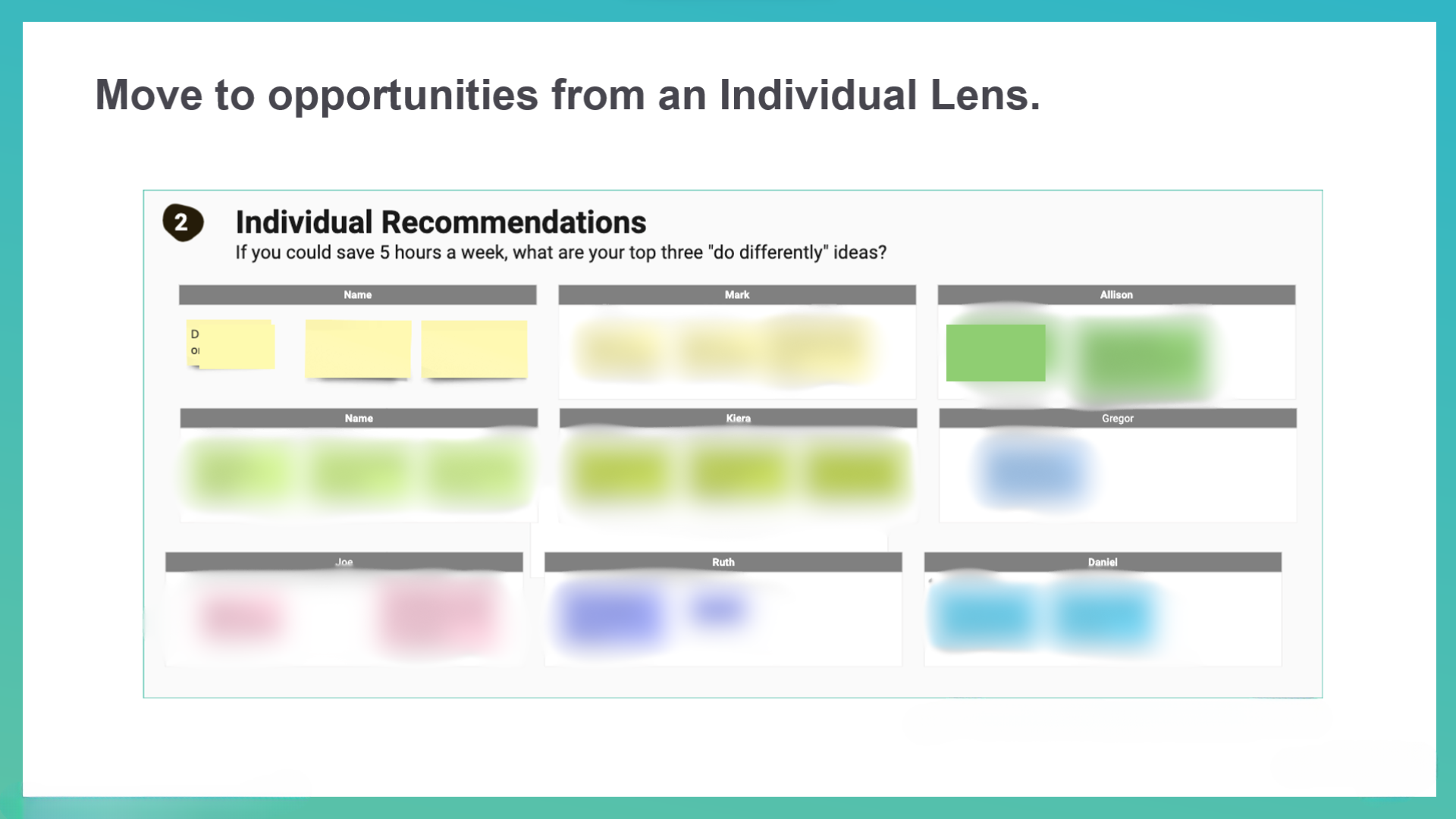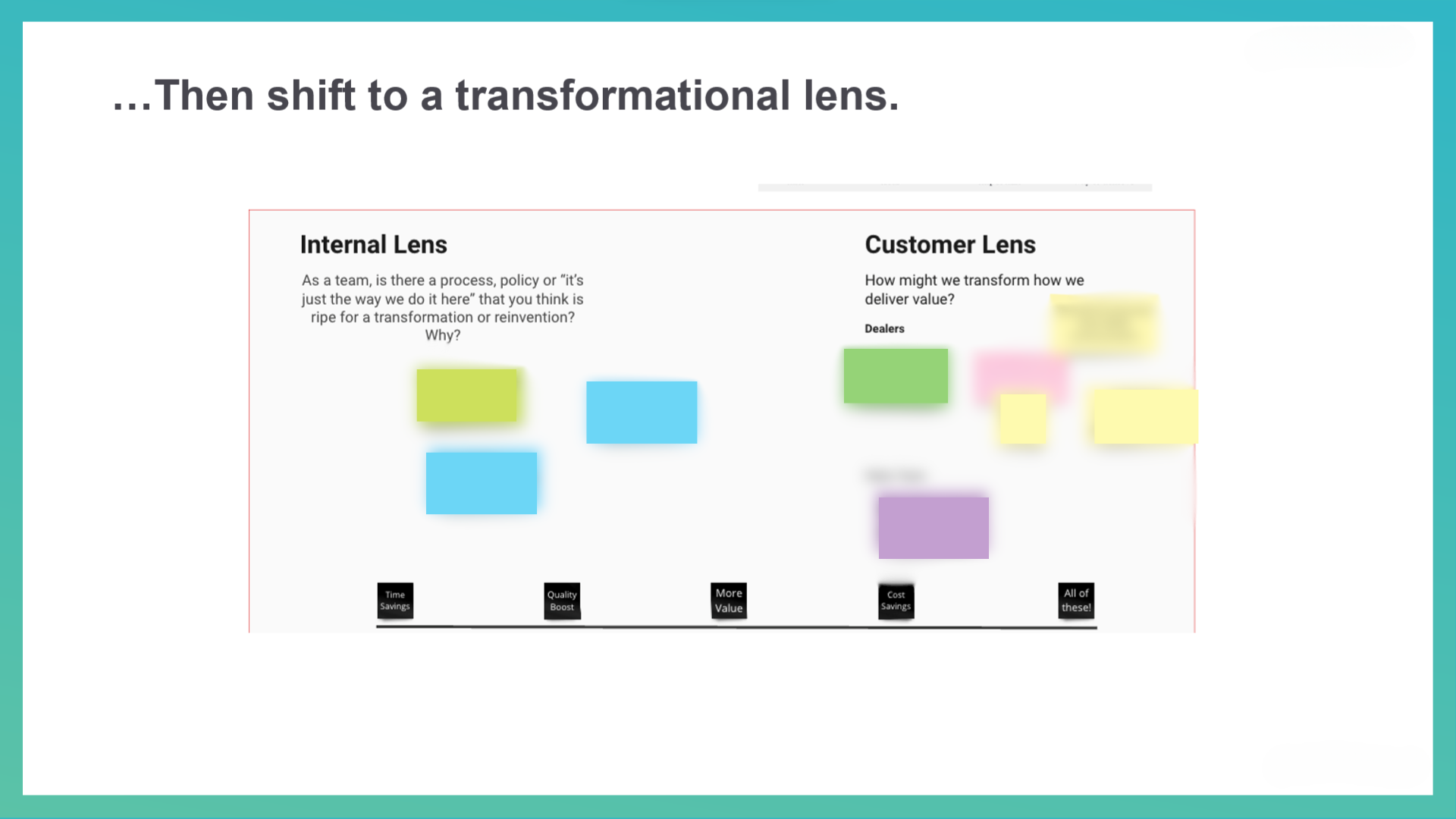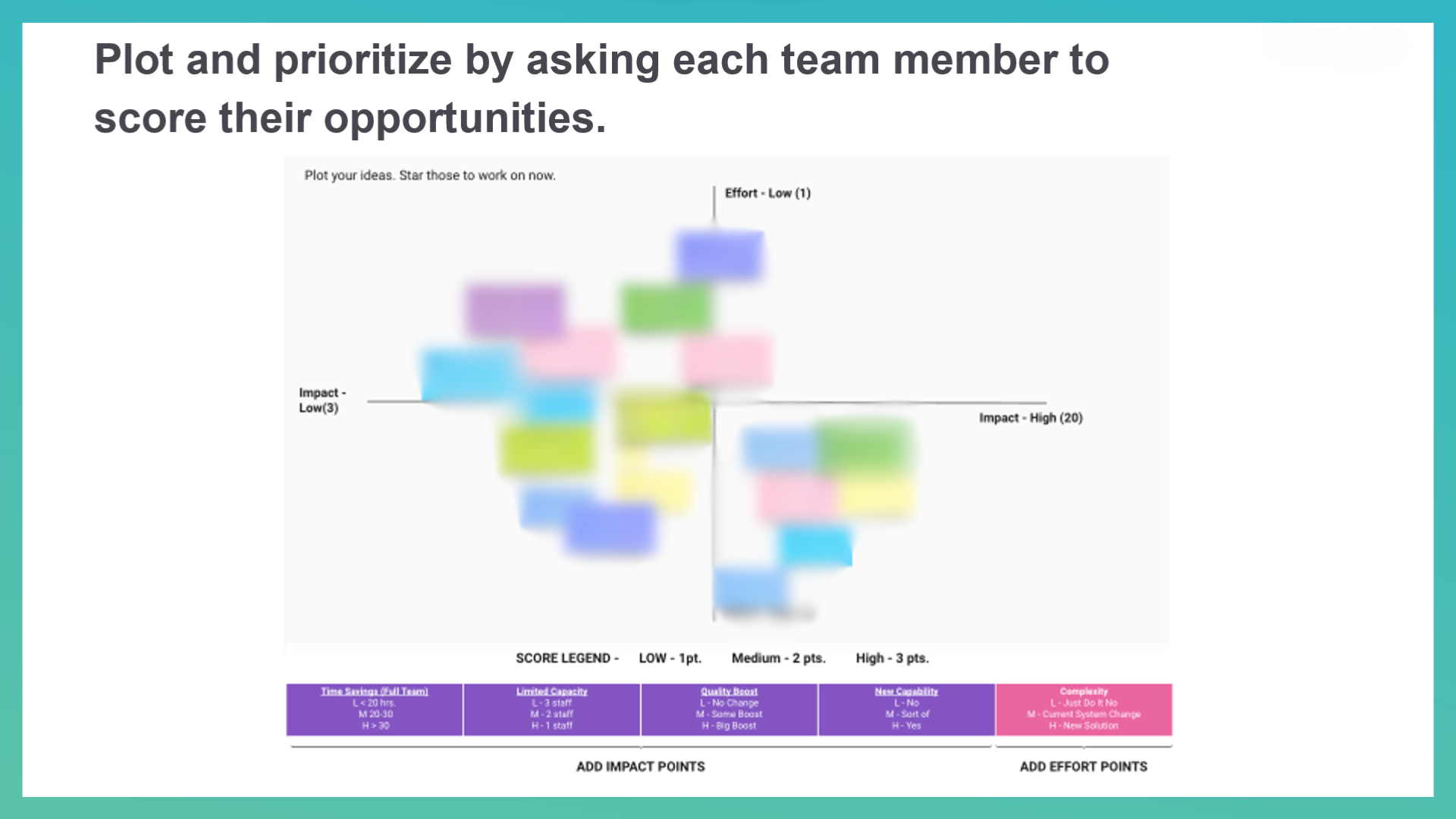Artificial intelligence (AI) has become the buzzword in today’s ever-changing world—it is everywhere. From supply chain optimization to Large Language Models and predictive analytics development, AI offers new ways for organizations and businesses to gain a competitive edge, improve efficiency, and change how they create value. As more organizations realize the importance of AI adoption, having a well-defined AI transformation strategy may be the most important thing you can do in 2024.
But what is AI transformation, and why do you need a strategy?
You need to build your AI strategy now to get your organization started in the right direction before you get caught on your heels.
AI is your next force multiplier to help organizations leverage time, talent, and treasure more significantly than ever before. Adopting an AI transformation strategy will help organizations and teams reduce the number of redundant, tedious, and time-consuming tasks and open themselves up for more strategic work.
Pro Tip: Our job as strategists is to facilitate the conversations and help organizations leverage this technology to shift to more strategic work.
Overview: Why is it Important to Develop Your AI Transformation Strategy?
Developing an AI transformation strategy is paramount for any organization looking to multiply its mission. By systemically adopting and leveraging AI technologies within their teams, organizations can achieve digital transformation and uncover new insights and opportunities for growth. An effective AI strategy is designed to increase business value, create a competitive advantage not previously achievable, and make your organization more efficient than before.
With the right AI strategy, organizations can capitalize on all of the unlocks AI has provided – from machine learning to new business models – while proactively mitigating some of the risks like data privacy, customer data, and biases. Organizations can drive innovation, automation, and better decision-making by aligning agile and strategic AI adoption initiatives with business goals.
Help Your Workforce Shift to Strategic Work with OnStrategy’s AI Workshop
To successfully assist your team in adopting AI technologies to shift to more strategic and meaningful work, we recommend running your own AI Transformation Workshop with them. This post outlines the steps to running your AI Transformation Workshop, but if you want to run this workshop with our purpose-built exercises and Miro boards, start a free trial of the StrategyHub by OnStrategy.
This guide serves as a blueprint for leaders to guide this conversation and run their workshop in a way that empowers their team to adopt technologies in a purposeful, agile, and positive way.
At the end of the workshop, you and your team will:
- Understand how AI can support strategic decision-making and business process automation.
- Identify the right adoption strategy based on your unique business needs.
- Empower your workforce with the knowledge and skills needed for AI transformation.
- Learn how to effectively integrate AI technologies into their business processes to gain efficiencies and shift to strategic work.
Identifying Areas of Opportunity
It’s important to note that we are not conducting this AI workshop from the perspective of ‘technologists’ or AI experts. Instead, we are strategists and leaders first, and our role in this landscape is to facilitate conversation about how AI can be a force multiplier for organizations and to guide them in prioritizing their efforts.
Identifying opportunities involves assessing current processes and understanding how to integrate artificial intelligence technology to improve your team’s effectiveness. Once your team determines the immediate opportunities they want to implement, they can share them with the broader team.
AI Transformation starts from the bottom up.
An AI transformation strategy is less effective if it starts with the executive team. Instead, it should start at the bottom level with individuals. Starting from the bottom up ensures that the people directly impacted by the shift are in the room and get a say in their involvement in the process.
Teams can work together to identify business problems and opportunities for adoption throughout their workforce.
Pro Tip: By involving employees at each level, organizations can tap into their unique insights and experiences, leading to a better understanding of how AI technologies will benefit their employees’ workflows and efficiencies.
Step 1: Begin with your mission, guiding principles, and “North Star.”

How does AI support your mission? What are your guiding principles?
The first step in the AI transformation journey is to ensure that your AI transformation always aligns with your big ‘why.’ Why does your organization exist? What impact do you want to have on the world around you?
If you haven’t done so, craft your mission, guiding principles, and “North Star.” Then, consider how the power of AI can assist you in reaching the next level and multiplying your mission.
Pro Tip: Consider your big priorities for the next twelve months and determine how AI tools can help you achieve them faster and more effectively. Consider the impact you can have on your community if you and your team can save five hours a week on administrative tasks.
When you align your AI strategy with your organization’s mission, you ensure that technologies support your long-term goals. Establishing guiding principles allows you to make responsible and strategic decisions for your AI systems. At the same time, your “North Star” provides a clear vision of where you want to go with your AI transformation.
Step 2: Brainstorm opportunities at an individual level.

What are 3 things you could do differently if AI saved you 5 hours a week?
One of the critical aspects of AI transformation is involving each individual on your team and tapping into their expertise. Start by asking your team individually, “What are three things in your day-to-day role that you could do differently if you saved five hours a week?” This exercise encourages employees to identify areas for improvement and potential time-savers. Here are some ways to engage your team in this process:
- Conduct brainstorming sessions to gather ideas and insights.
- Encourage open communication and collaboration.
- Identify business processes that can be automated using technologies.
Focus on leveraging human resources more effectively, allowing them to focus on high-value tasks. By involving your team in the AI transformation process, you gain valuable insights and promote a culture of innovation and continuous improvement.
Step 3: Identify time-savers at a team level.
What repetitive and time-consuming tasks could be automated?
The next step in the AI transformation workshop is to identify time-savers at a team level. Consider your team’s core activities and which tasks are most time-consuming and could stand to be automated. How would that make your team more efficient? Keeping your team’s and organization’s goals in mind is essential. We aren’t just implementing new technology for technology’s sake but to reach our goals faster and farther than ever before.
By analyzing your team’s processes, workflows, and inefficiencies, organizations can identify opportunities for automation using technologies. Here are some key considerations when identifying time-savers:
- Look for repetitive tasks that can be automated using algorithms.
- Look for ways that AI can help you make sense of data sets.
- Focus on processes that are time-consuming or prone to human error.
- Explore ways to streamline data collection, analysis, and reporting using AI-powered tools.
- Identify areas where technologies can improve overall efficiency and productivity.
- Consider what “off the shelf” third-party AI tools might save your team time.
Step 4: Consider the organizational transformation.

How might AI drive major organizational transformation?
Next, move up from the team perspective to the organizational transformation perspective. A transformative mindset fuels informed decision-making, analytics, and the achievement of business goals. There are two scopes of organizational transformation:
- Internal: As a team, is there a process, policy, or way of doing things that you think is ripe for a transformation or re-invention? Why?
- External (Customer): How might we transform how we deliver value? How can AI transform our customer experience?
Pro Tip: Although many people think these changes must be revolutionary or voluminous to be worthwhile, that is not always the case. Sometimes, the simplest changes can make a significant impact on your organization.
One question your team may struggle with is, “What are we going to actually do with the time we’re getting back?”
This transformation may be challenging for people to wrap their heads around, but brainstorming new opportunities for your team, like adding additional outreach and training opportunities to grow, may help get your team on board and excited for what’s to come.
Step 5: Evaluate your opportunities.

After the creative brainstorming phase, the next step is assessing and prioritizing opportunities. This is the challenging part, but here are some ideas to make the process easier:
- Plot and prioritize your opportunities by asking each team member to score their opportunities to determine which will be the most attainable and which can be easily pursued first.
- Run a return-on-investment analysis throughout this stage.
- Evaluate each initiative’s effort versus impact, as it will help you determine which initiatives have the highest value for your organization’s current capabilities.
- Pursue your low-hanging fruit opportunities first, i.e., initiatives with tools that already exist or that take minimal effort or effort to implement but will make a large impact.
Pro Tip: Remember that while we are all intelligent expert strategists, we are not experts in artificial intelligence. This new technology necessitates a nuanced approach. Don’t expect perfection out of the gate. As the technology evolves, so will your expertise and knowledge.
Step 6: Share with the organization.
Once you have the logistics of your AI transformation initiative in place, sharing it with your CEO or executive team is the final step. As with any other strategic planning process, getting executive buy-in is vital. This last step ensures fresh insights and empowerment as your team carries these initiatives forward. For best practices, we recommend summarizing your priorities in two categories:
- Improving the current – How does this initiative strengthen your organization’s current process and business prospects?
- Creating the future – How does this AI initiative help you achieve your mission and future goals?
3 Tips to Run Your AI Transformation Workshop
Here are three tips to ensure you can run an excellent AI transformation workshop.
Always have AI expertise in the room.
Always have your engineering, tech, or IT team in the room with you. Recruiting team members with technological expertise can help your team maintain perspective on current capabilities and what your team can feasibly achieve.
Ensure You have an AI governance charter in place.
Guiding principles or governance agreements regarding artificial intelligence technology are critical. It’s no longer the Wild West; you must be thoughtful and responsible in your approach to AI.
Challenge each other respectfully and focus on prioritization.
This workshop was created for the primary purpose of team collaboration. Converse, debate, disagree, but do it respectfully with the knowledge that everyone is new to this process. Your goal should be to learn from one another while also finding ways to bring your organization closer to your mission.
Conclusion
Developing a well-defined AI strategy is crucial for organizations in today’s rapidly evolving landscape. AI transformation is about aligning technology adoption with your mission, empowering your team to identify opportunities for improvement, and evaluating those opportunities for maximum impact.
By systematically approaching AI transformation with this workshop, you can enhance efficiency, create a competitive advantage, and drive innovation while mitigating potential risks.
Other AI Resources:
- 5 Questions to Kickstart Your AI Implementation
- Building an AI Governance Blueprint
- AI Leadership: Fostering a Culture of AI Experimentation and Strategic Growth
FAQs
Organizations often encounter challenges during AI transformation initiatives, including employee resistance to adopting new technologies, difficulties in finding skilled AI professionals, fears of job loss and redundancy, and managing the cost of implementing solutions across the organization.
An AI transformation workshop offers numerous benefits for your organization. It helps you understand the potential advantages and challenges of implementing AI, identify operational improvement areas, and uncover growth opportunities. Moreover, an AI workshop provides insights into the skills and resources required for successful AI implementation and enables you to create a roadmap aligned with your long-term goals.
The purpose of an AI transformation workshop is to help organizations tap into the potential of AI. It enables businesses to identify areas where AI can enhance operations, increase efficiency, and multiply their mission. The workshop provides actionable steps toward achieving goals.











